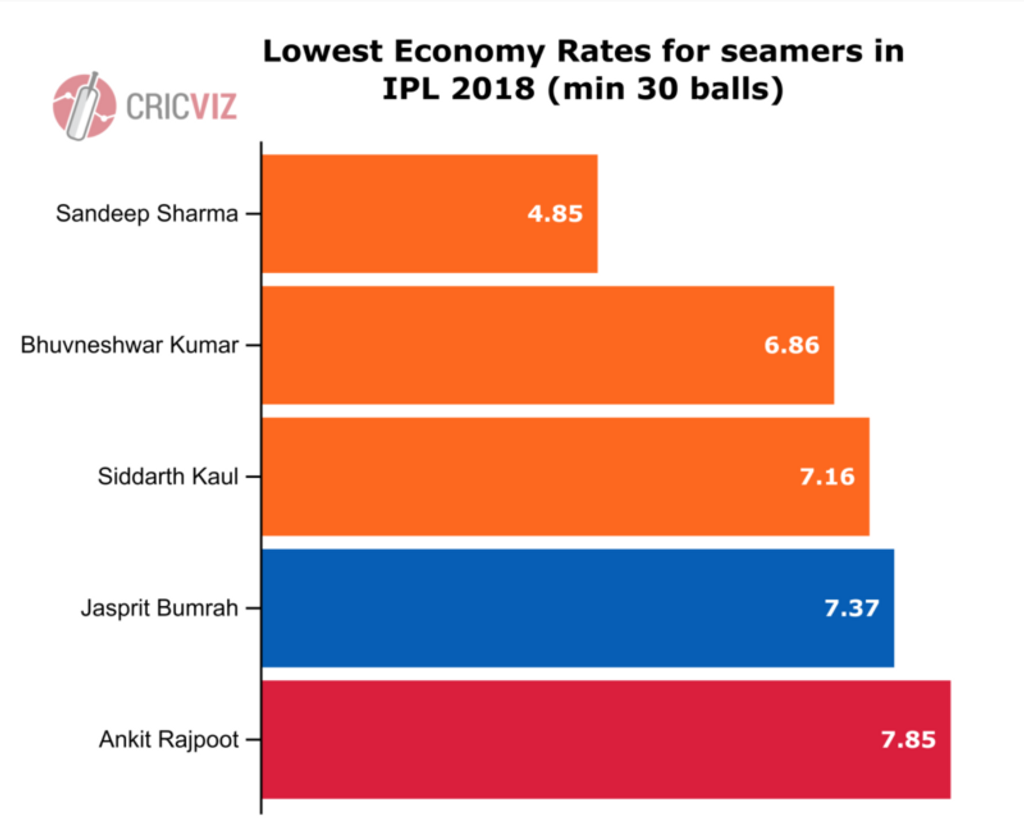
On Tuesday night, Sunrisers Hyderabad successfully defended 118, the second-lowest total ever to be defended in a completed IPL match. CricViz analyst Ben Jones has taken a look at the data from an extraordinary night in Mumbai, to try and work out quite how Sunrisers pulled it off.
CricViz are cricket intelligence specialists
Captain fantastic
Backed into a corner, let down by his batsmen, and with the sense of his team’s IPL campaign slipping away, Kane Williamson had a blinder as captain. Stepping into the shoes of David Warner, the Kiwi has tended to lead from the front as skipper, sitting third in the run-scoring charts with 259 runs so far this season. His on-field, tactical captaincy has been subtle, rather than inventive or ‘funky’ – but this match was something else. From the moment Sunrisers took to the field, he was whirring. In the first 10 overs of Mumbai’s chase, there were never two consecutive overs of either seam or spin, the pace of the game never allowed to drift.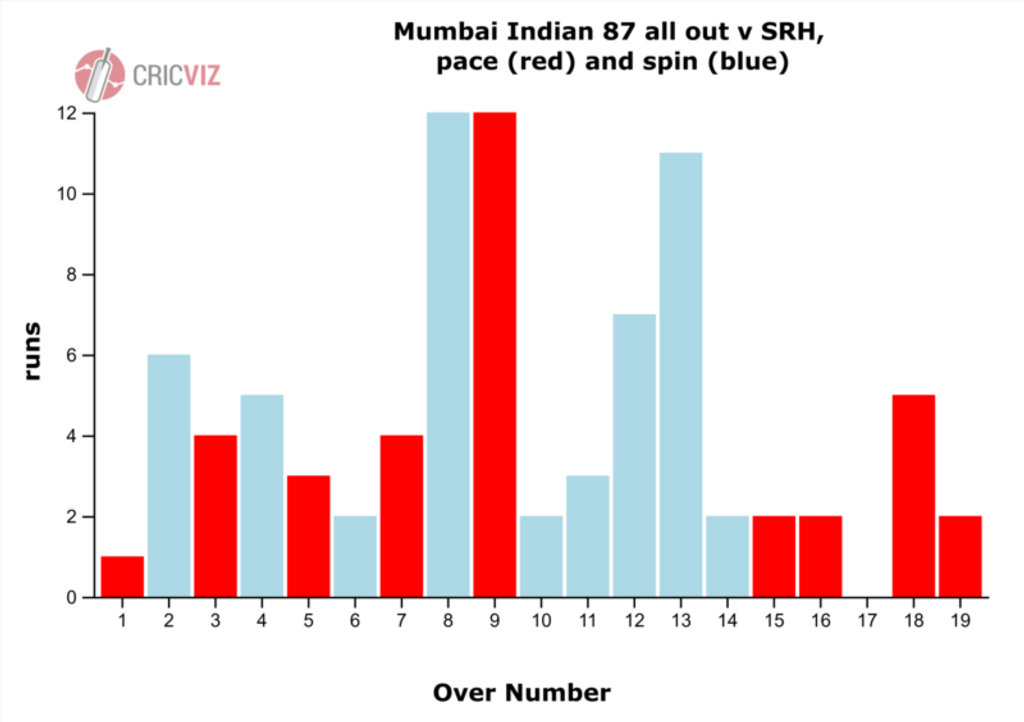
Williamson also shuffled his pack expertly to ensure the best match-ups were always in play. Mumbai’s dangerous No.3 Ishan Kishan scores at just 6.63rpo against off-spin, his worst record against any bowling type. Crucially, despite Mohammed Nabi drawing no false shots in his first over, offering little threat, Williamson stuck with him as Kishan came to the crease – and the Afghan duly struck with his second ball against the new batsman. Then, as the responsibility for the chase shifted to Suryakumar Yadav, Williamson switched things up again.
Suryakumar scores at 5.75rpo against left-arm orthodox bowling across his career, and the Sunrisers skipper ensured that only Nabi bowled more deliveries to Suryakumar than left-arm spinner Shakib Al Hasan. These perfect match-ups may have been informed by analytics pre-match, or they have simply been down to Williamson’s own cricketing intuition. Regardless, the plans were superbly implemented.
On top of this, he also played the DRS system adeptly, something which has been a trend for Sunrisers across the competition. By and large, Hyderabad have been extremely disciplined with the review system. They’ve not reviewed any of their batting decisions, and no team has a higher success rate for reviews in this year’s season. Williamson’s wielded the T-sign with caution, but on this occasion it was crucial – overturning the not out decision when Krunal Pandya was LBW to Rashid Khan was the match-turning moment.
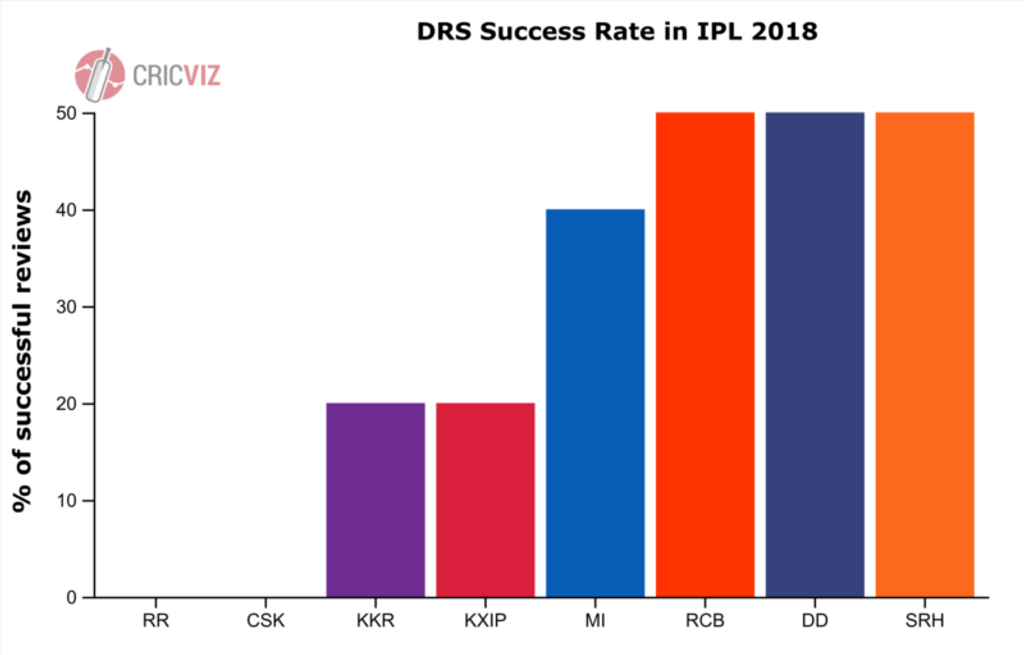
Superb spin
The perfect storm of an injury to Billy Stanlake and the pre-planned resting of Bhuvneshwar Kumar meant that Sunrisers were pushed into fielding a three-man spin attack, with Afghanistan’s Nabi coming in to join his compatriot Rashid Khan and the all-rounder Shakib. This posed a very particular problem for Sunrisers. Mumbai have been particularly strong against spin in the middle-overs – in fact, as the graphic below shows, before this contest, they were the fastest scorers against slower bowling in that middle phase. Yet it was this strength of Mumbai’s campaign so far which Sunrisers managed to negate so impressively. The hosts scored at just 6.16rpo against Nabi, Shakib and Rashid Khan in the middle overs.
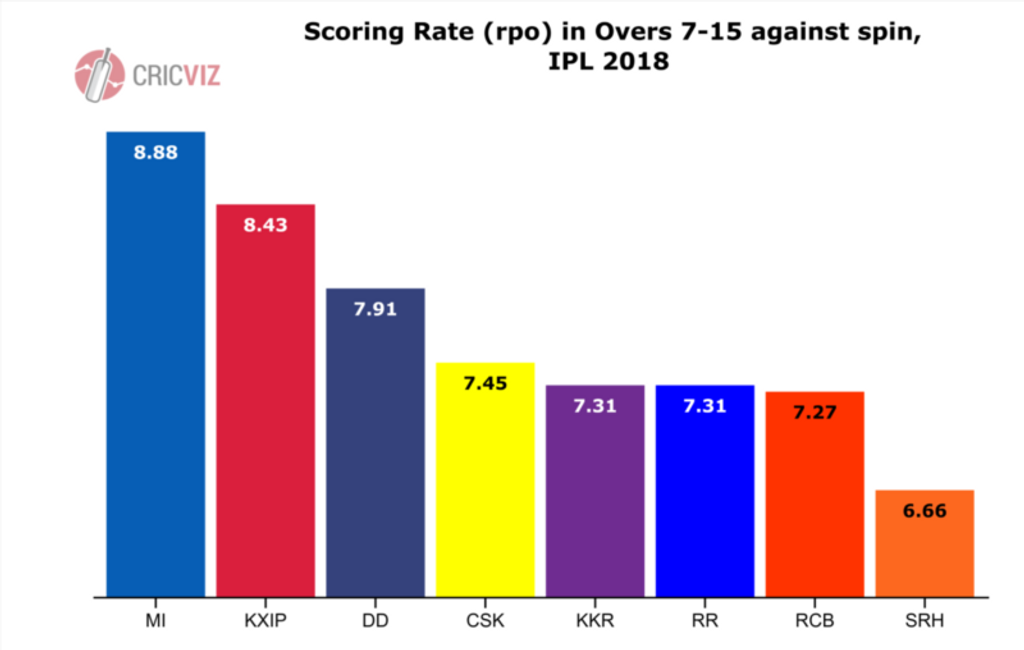
However, what caught the eye in particular was the patience of the latter two bowlers at the most important moment in the chase. The longest partnership of the match was that between Krunal Pandya and Suryakumar Yadav, who came together in the sixth over, at 22-3. They lasted 39 deliveries, scoring 40 runs, and half of those balls were delivered by either Rashid or Shakib. Throughout this passage, the T20 nous of the two spinners came to the fore, as they both adapted their games in order to cope under the pressure.
Rashid Khan has seen his googly go the distance in the competition so far, with batsmen perhaps able to pick it more easily due to his increased exposure, and they’ve scored at 9.51rpo against it in the 2018 IPL. Accordingly, Rashid lowered the number he was bowling – just 21 per cent of his deliveries were googlies, well down on a career average of 35 per cent. Conversely, Shakib bowled his stock ball only 70 per cent of the time, well down on his career average of 93 per cent, going through the variations. Up to that point in the tournament, 40 per cent of Shakib’s arm-balls had drawn false shots, compared to just 6 per cent for his stock ball. So he doubled the number of arm-balls he bowled, and didn’t concede a run with them in the match. Both players adapted their style to get the absolute maximum from their bowling, and the pressure told, Pandya playing down the wrong line to a ball he thought was a googly, and being trapped plumb in front.
Nobody in the match saw more balls spanked to the boundary than Kaul; but nobody drew more false shots than him
Kaul-blimey
Holding Mumbai exactly where they wanted them, Sunrisers never gave Rohit’s side the chance to kill the game off in one or two overs. Williamson kept his powder dry, and delayed any gamble for as long as he possibly could, until the situation demanded it, until he brought Siddarth Kaul back for a second spell. Undoubtedly, it was a risk to re-introduce Kaul; in his first spell, he was bowling an aggressive, wicket-taking length, extremely full and designed to draw the batsmen forward. Indeed, 67 per cent of his deliveries were met with a front foot shot (the average for the season being 50 per cent), Krunal and Suryakumar seeing the chance to stretch their arms and get ahead of the rate, scoring at 8.25rpo as they came at the headbanded seamer. No other Sunrisers seamer had a higher economy against front foot shots.
But in that second spell, Kaul kept that length full. This time, even more of his deliveries were met with a front foot shot, 75 per cent in fact – but those shots brought three wickets in nine balls, and killed the game for Sunrisers. Kaul’s return to the crease was the gamble, the roll of the dice, the moment of jeapordy, but he came through to finish the contest. Nobody in the match saw more balls spanked to the boundary than Kaul; but nobody drew more false shots than him, and of course, nobody took more wickets.
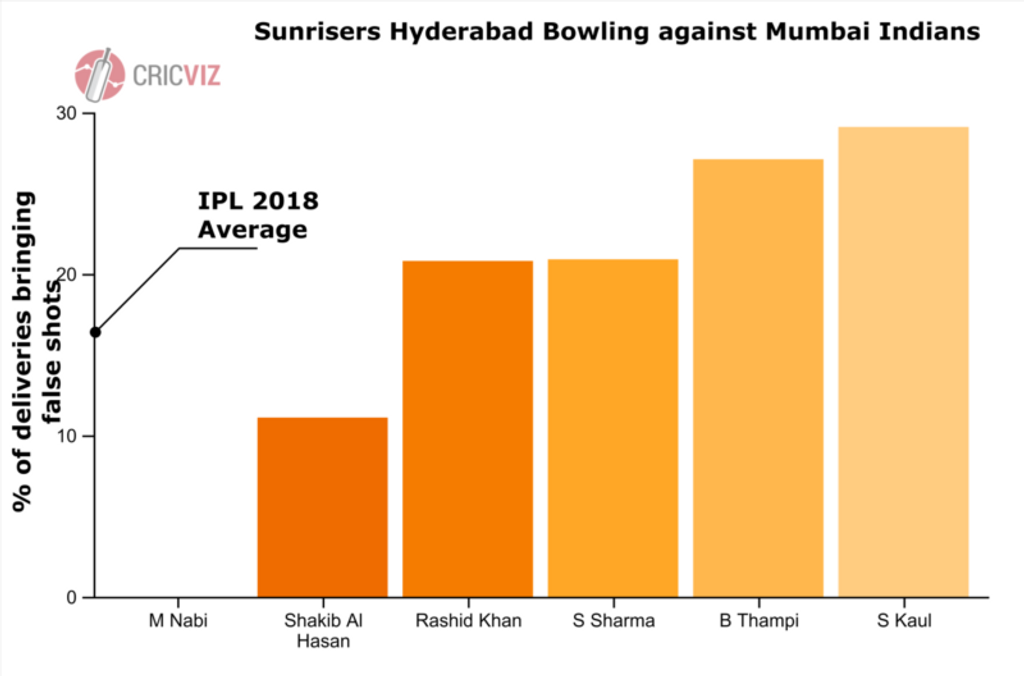
Best in field
On top of all these wonderful bowling performances was an astonishing collective fielding display from SRH. They prowled and leapt, and did all they could to give off the air of a team who thought they could win, but their approach had a tangible impact on the result. Fielding ability (the metric England’s national team use to track their fielding performances, i.e. fielding’s runs impact compared to an average performance) measured the Sunrisers fielding as restricting Mumbai by 9.7 runs, a sizeable chunk of the victory margin. That also makes it the sixth-best fielding performance of the 48 we’ve seen so far this season, as well as being Sunrisers’ fourth-best fielding display since records began at the start of the 2016 IPL season. It was the kind of performance that has you counting the fielders, to check they haven’t snuck on an extra man onto the square. Indeed, it wasn’t only the orange shirts that reminded you of the hounding, well-drilled pressure of the BBL’s Perth Scorchers.
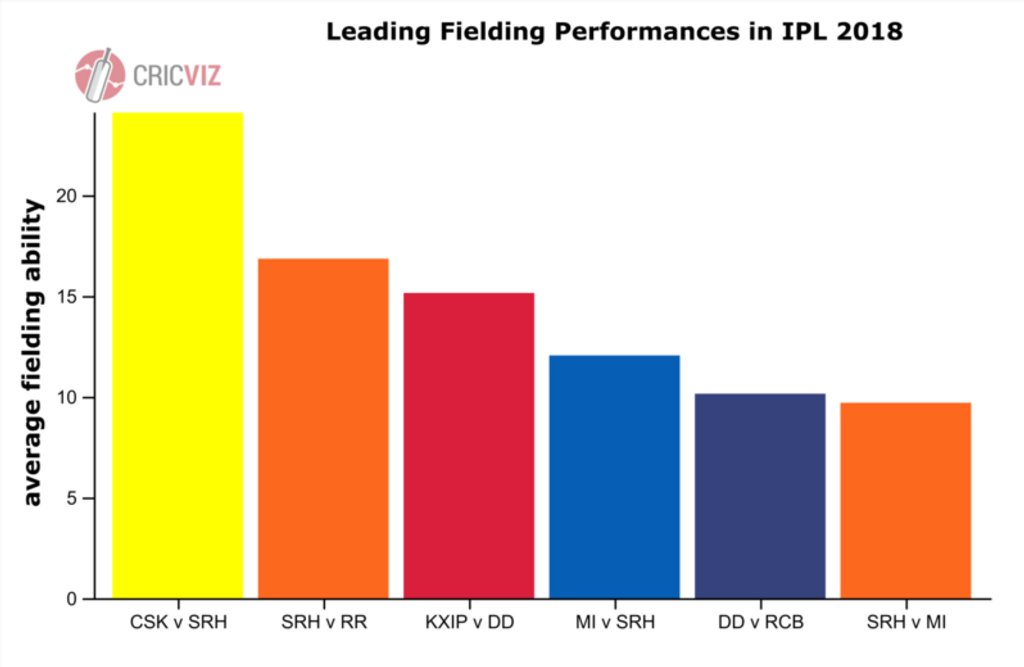
Strength in depth
After the celebrations on Tuesday night, as they prepared for their return to Hyderabad ahead of tonight’s game against Kings XI, Tom Moody and his captain will have reflected on what a display of depth this was for their squad. Before the Mumbai contest, Bhuvneshwar Kumar was the most economical seamer in the tournament (to have played more than one match), going at just 6.86rpo. Resting him to manage his ongoing performance made sense, but the way in which remaining players stood up was impressive. After the match, the top three most economical seamers in the tournament were Sunrisers players.
